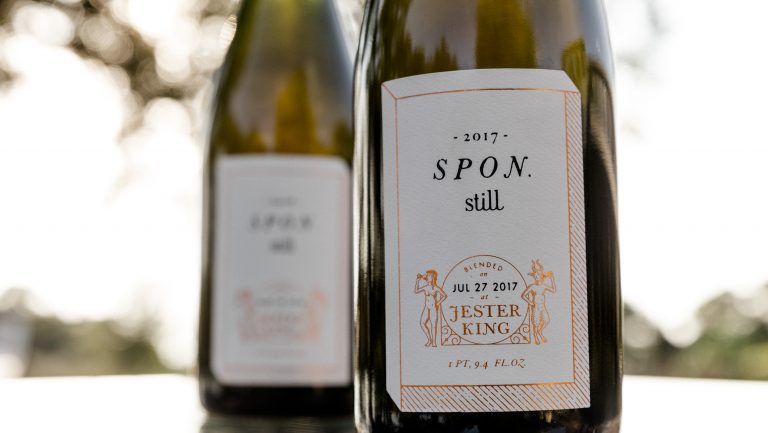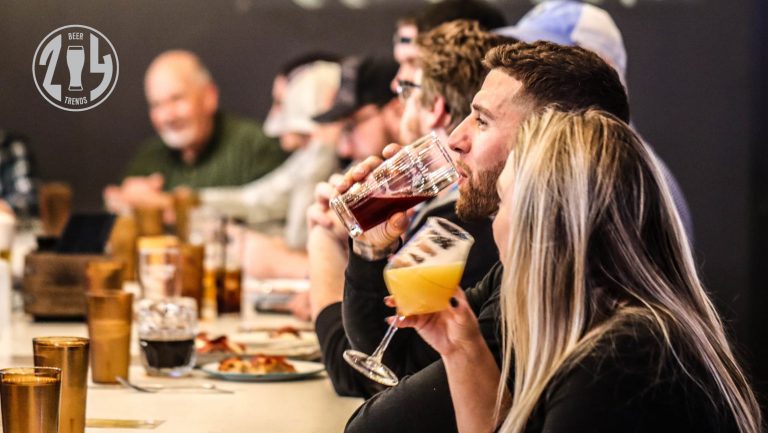On a rowdy spring night at a Nashville dive bar decorated like eternal Christmas, a cheerful brewer passed me a plastic pouch of jiggling mystery liquid.
I’m never one to turn down a boozy offering, no matter how dubious, so I gripped the squishy bag and squeezed the spigot. I expected wine, but the thin stream tasted funky and cuttingly acidic, a sour beer minus one seemingly essential component: bubbles.
A mistake? No, that was the MO of Primitive Beer of Longmont, Colorado, which makes spontaneously inoculated, barrel-fermented beers served still and, like some wines, sold by the box. “We’re trying to push people’s perceptions of what beer should or can be,” says Brandon Boldt, Primitive’s cofounder. “There’s this American fascination with effervescence.”

Don’t miss the latest drinks industry news and insights. Sign up for our award-winning newsletters and get insider intel, resources, and trends delivered to your inbox every week.
To American imbibers reared on fizz, zero bubbles may seem as off-putting as that forgotten cup of beer found after a party. However, in Belgium still beer has a proud tradition. There, spontaneously fermented lambics are sometimes kegged or bagged bubble free and served as flat as the day is long. It’s not a bug but an appealing feature—without carbonic acid, sour beers are less perceptibly acidic and can make for easier drinking.
Inspired by Belgian brewing customs, a budding group of sour- and wild-focused American breweries are saying sayonara to fizz. Last year, Upright Brewing of Portland, Oregon, bottled the first iteration of its Ives series of raw-wheat beers, whose barreled ferment is reminiscent of white vermouth. Atom Brewing of Erie, Colorado, has an oak-aged imperial stout, Stillness, that—yes—is packaged still. In St. Louis, Side Project Brewing has produced still beers such as Trail Dubbel, a Belgian-style beer aged in red-wine barrels.
“The result is one of the most vinous beers I have ever had the pleasure of drinking,” Cory King, Side Project’s owner and brewer, wrote in a blog post last year. “Rich tones of red-wine grapes mingle with the oxidative malt notes, warm alcohol, and layers of oak and red fruits. This beer sits right between the big red wines of Spain and the Port wines of northern Portugal.”
The Ale Apothecary in Bend, Oregon, uses both Pinot Noir and rye whiskey barrels to produce its annual Be Still, a dark sour seasoned with cascara and cocoa nibs. “If you add carbonic acid, that’s going to be a one-dimensional, really sharp beer,” says Paul Arney, Ale Apothecary’s founding brewer. “The thought was, when we pull the beer out of the barrel and present it still, it’s going to allow that roast to become part of the beer and not mask the cocoa nibs and cascara.”
Be Still was first released in 2014 and allocated to members of the Apothecary’s Ale Club, which notably included one of Arney’s neighbors. “He’s one of those know-it-alls,” says Arney, laughing, “who’ll come over and tell you you’re doing something wrong.”
True to form, the neighbor came over and told Arney that he’d finally messed up a batch of beer. The brewer was baffled—what had gone wrong? “Well,” the neighbor said, “I opened up that Be Still beer, and it was totally flat. I opened up the other one, and it was flat, too. I had to dump them out.”
The challenge will be to change perceptions and expectations. Sparkling wine and still wine are both beloved. Brewers, though, must fight a battle for the bubbles in the court of public perception.
“It comes down to these lingering opinions that beer is this cold, fizzy beverage,” says Jeffrey Stuffings, the founder and owner of Jester King in Austin, Texas. “There’s this expectation that it will be this effervescent, force-carbonated thing.”
Stuffings’s farmhouse brewery is among the country’s most innovative, taking deep inspiration from wineries and shepherding raw materials to a finished product with minimal intervention. That includes the brewery’s SPON series of spontaneously fermented beers. Since 2016, the brewery has released an annual still version of SPON, as well as No Spiders, a blend made with spontaneous beer from De Garde in Tillamook, Oregon.
While other collaborations quickly disappeared, No Spiders, unveiled last September in kegs, still lingers. Overcoming stigma isn’t simple. Says Stuffings, “Still beer is a weird thing to a lot of drinkers. There’s a lot of legwork that goes into selling a beer like this.”
Primitive peddles its packaged sours solely from its taproom, using the bag-in-a-box format to set expectations. “Most people in America are used to boxed wine and the idea that, okay, if I’m going to pour wine from a box, it’s not going to be Champagne,” Boldt says. “This is going to be a still, cellar-temperature beverage that can be consumed [in quantity].”
In the taproom, he pours still sours through a beer engine and sparkler—the kind used for lower-carbonation cask ales—to create a full, almost fluffy mouthfeel. “It sits with body and isn’t watery and lifeless,” he says, which “is what most people expect with a lack of carbonation.”
In certain respects, still beers give consumers a unique opportunity to drink just like brewers do—day in, day out—sampling and blending in pursuit of singular flavors. “I don’t know if it’s ironic or fitting, but all brewers are drinking their beers when they’re warm and still,” Boldt says. “Some of my favorite beers have been when I’m ripping samples out of the fermenter.”

Dispatch
Sign up for our award-winning newsletter
Don’t miss the latest drinks industry news and insights—delivered to your inbox every week.
Contributing editor Joshua M. Bernstein is a beer, spirits, food, and travel journalist, as well as an occasional tour guide, event producer, and industry consultant. He writes for the New York Times, Men’s Journal, New York magazine, Wine Enthusiast, and Imbibe, where he’s a contributing editor in charge of beer coverage. Bernstein is also the author of five books: Brewed Awakening, The Complete Beer Course, Complete IPA, Homebrew World, and Drink Better Beer.







